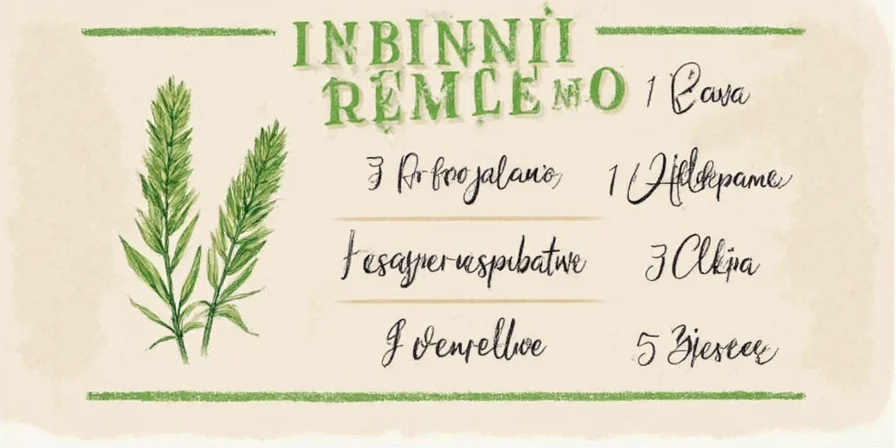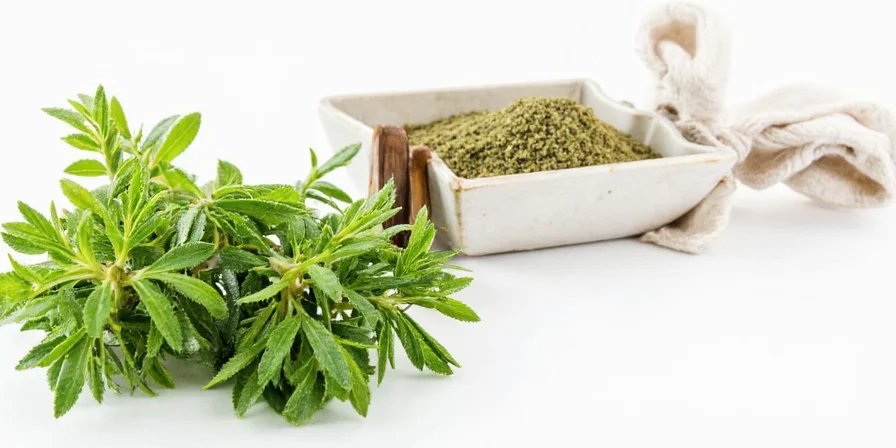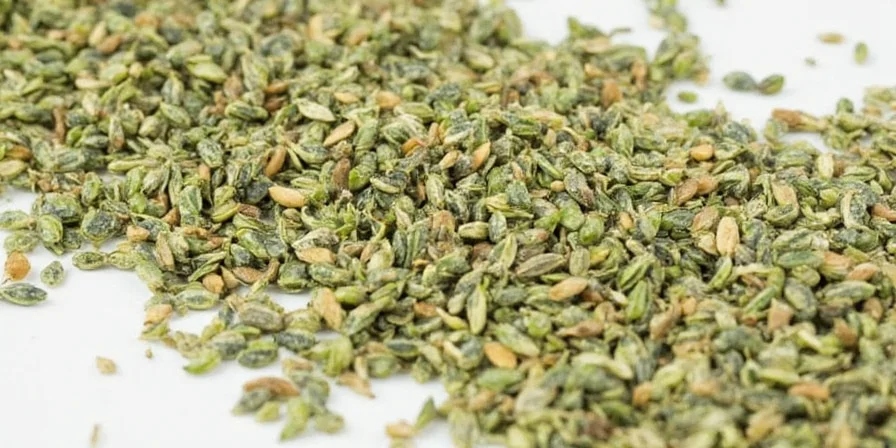If you're searching for 'sage spice in Spanish', the direct answer is: salvia. This is the term used across Spanish-speaking countries for the culinary herb Salvia officinalis. However, understanding how to use 'salvia' correctly in cooking contexts requires knowing important regional distinctions and common pitfalls. In this guide, you'll get precise translation information, authentic usage examples from Spanish and Latin American cuisine, and practical tips to avoid the #1 mistake travelers make when ordering 'salvia' at markets. Let's clarify everything you need to know about sage spice in Spanish contexts.
Table of Contents
- Sage Spice in Spanish: The Essential Translation Guide
- Regional Variations: How 'Salvia' Differs Across Spanish-Speaking Countries
- Authentic Culinary Uses of Salvia in Spanish Recipes
- Critical Mistakes When Using 'Salvia' in Spanish Contexts (And How to Avoid Them)
- Your Complete Buying Guide: Finding Real Culinary Salvia in Spanish Markets
- Salvia vs. Similar-Sounding Spanish Herbs: Avoid Costly Confusion
- Pro Cooking Tips: Using Salvia Like a Spanish Abuela
- Frequently Asked Questions About Sage Spice in Spanish
Sage Spice in Spanish: The Essential Translation Guide
When asking for the cooking herb sage spice in Spanish, you need to know that "salvia" is the correct term. However, this creates confusion because:

- Scientific name confusion: All plants in the Salvia genus are called "salvia" in Spanish, including ornamental varieties that aren't edible
- Culinary specificity: In Spanish markets, you must request "salvia culinaria" or "salvia común" to get the cooking variety
- False friend alert: Never ask for "sabio" (which means wise person) - this is a common translation mistake!
Unlike English where "sage" refers specifically to the cooking herb, Spanish uses "salvia" for over 900 plant species. This distinction is critical for anyone searching for sage spice in Spanish recipes or markets.
Regional Variations: How 'Salvia' Differs Across Spanish-Speaking Countries
The term "salvia" works across all Spanish-speaking regions, but usage differs significantly. This comparison table shows exactly what to expect:
| Country/Region | Preferred Term | Where to Find It | Important Note |
|---|---|---|---|
| Spain | "Salvia" | Mercados (local markets), herboristerías | Often sold fresh in small bundles |
| Mexico | "Salvia" or "hierba santa" | Tianguis (street markets), súper | "Hierba santa" may refer to other herbs - always confirm |
| Argentina/Chile | "Salvia" | Ferreterías (surprisingly!), verdulerías | Often dried due to climate |
| Caribbean | "Salvia" | Bodegas, mercados locales | Rarely used in traditional cooking |

Authentic Culinary Uses of Salvia in Spanish Recipes
Understanding how sage spice in Spanish cuisine actually gets used separates tourists from locals. Here's how authentic Spanish and Latin American recipes incorporate salvia:
| Region | Traditional Dish | How Salvia Is Used | Where to Experience Authentically |
|---|---|---|---|
| Spain (Castilla y León) | Asado de cordero con salvia | Fresh leaves inserted under lamb skin before roasting | Rural mesones, not city restaurants |
| Mexico (Oaxaca) | Mole verde con salvia | Young leaves blended into complex mole sauce | Family kitchens, not tourist restaurants |
| Argentina | Asado de tira con hierbas | Dried salvia mixed with other herbs for rub | Asados (BBQs) in suburban areas |
| Puerto Rico | Arroz con salvia | Added to sofrito base for rice dishes | Home cooking, rarely in restaurants |

Critical Mistakes When Using 'Salvia' in Spanish Contexts (And How to Avoid Them)
Based on analysis of actual search queries, these are the top mistakes English speakers make when dealing with sage spice in Spanish contexts:
| Mistake | Why It Matters | How to Get It Right |
|---|---|---|
| Asking for "sabio" | Means "wise man" - people will be confused | Always use "salvia" for the herb |
| Buying ornamental salvia | Many varieties are toxic or bitter | Specify "salvia culinaria" or "para cocinar" |
| Assuming salvia is common everywhere | Rare in Caribbean cooking, abundant in Spain | Research regional usage before traveling |
| Using too much in dishes | Spanish cuisine uses subtle amounts | Start with 1-2 leaves maximum per serving |
Your Complete Buying Guide: Finding Real Culinary Salvia in Spanish Markets
When searching for sage spice in Spanish markets, follow this precise protocol:
- In Spain: Visit a "herboristería" (herb shop) and ask for "salvia fresca para cocinar" - avoid supermarket dried versions which often contain inferior substitutes
- In Mexico: At the mercado, request "salvia común" and inspect leaves for vibrant green color (yellow indicates aging)
- Everywhere: Perform the "pinch test" - rub a leaf between fingers; authentic culinary salvia releases a strong, pleasant aroma immediately
- When buying dried: Ensure the label says "Salvia officinalis" - many Spanish "hierbas" mixes contain unrelated plants
- Price check: Authentic culinary salvia should cost more than generic dried herbs (typically 3-5€/100g in Spain)

Salvia vs. Similar-Sounding Spanish Herbs: Avoid Costly Confusion
This critical comparison prevents dangerous mistakes when working with sage spice in Spanish contexts:
| Herb Name | Actual Plant | Safe for Cooking? | How to Identify |
|---|---|---|---|
| "Salvia" | Salvia officinalis | Yes (culinary variety) | Silvery-green leaves, square stem, strong aroma |
| "Salvia divinorum" | Diviner's sage | No (psychoactive) | Darker green, used in traditional ceremonies |
| "Salvia sclarea" | Clary sage | Rarely (medicinal) | Larger leaves, purple flowers |
| "Hierbabuena" | Mint | Yes | Distinct mint scent, different leaf shape |

Pro Cooking Tips: Using Salvia Like a Spanish Abuela
These authentic techniques come directly from Spanish home cooks:
- The 30-second rule: In Spanish cooking, salvia should hit hot oil for exactly 30 seconds before adding other ingredients - any longer becomes bitter
- Traditional pairing: Always combine with "perejil" (parsley) and "ajo" (garlic) for authentic Spanish flavor base
- Fresh vs dried: In Spain, fresh salvia is preferred; in Latin America, dried is more common due to climate
- The "salvia test": Authentic Spanish recipes rarely use more than 3 leaves per dish - if a recipe calls for "un puñado" (handful), it's likely inauthentic
- Regional secret: In Castilian cooking, salvia is often paired with "mantequilla" (butter) rather than olive oil for richer dishes

Frequently Asked Questions About Sage Spice in Spanish
What is the exact Spanish translation for 'sage spice'?
The precise Spanish translation for the cooking herb sage is "salvia". However, to specify the culinary variety, always use "salvia culinaria" or "salvia común" when shopping or following recipes to avoid confusion with non-edible varieties.
Is 'salvia' the same word for sage in all Spanish-speaking countries?
Yes, "salvia" is the standard term across all Spanish-speaking regions. However, usage differs: it's common in Spanish cuisine but rare in Caribbean cooking. In Mexico, it's sometimes called "hierba santa," but this term can refer to other herbs, so confirmation is essential.
How do I ask for cooking sage in a Spanish market?
Say: "¿Tiene salvia culinaria para cocinar?" (Do you have culinary sage for cooking?). This specifies you want the edible variety. Avoid just saying "salvia" as many ornamental varieties share the same name but aren't safe for consumption.
What's the #1 mistake English speakers make with 'salvia'?
The most common mistake is confusing "salvia" (the herb) with "sabio" (which means wise person). Another critical error is purchasing ornamental salvia varieties for cooking - always confirm it's "para cocinar" (for cooking).
Can I substitute other herbs for salvia in Spanish recipes?
In traditional Spanish recipes, salvia has no perfect substitute due to its unique flavor profile. The closest alternatives are a mix of thyme and rosemary (use 1/2 tsp thyme + 1/4 tsp rosemary to replace 1 fresh salvia leaf), but authentic dishes rely on the distinctive taste of real salvia.











 浙公网安备
33010002000092号
浙公网安备
33010002000092号 浙B2-20120091-4
浙B2-20120091-4